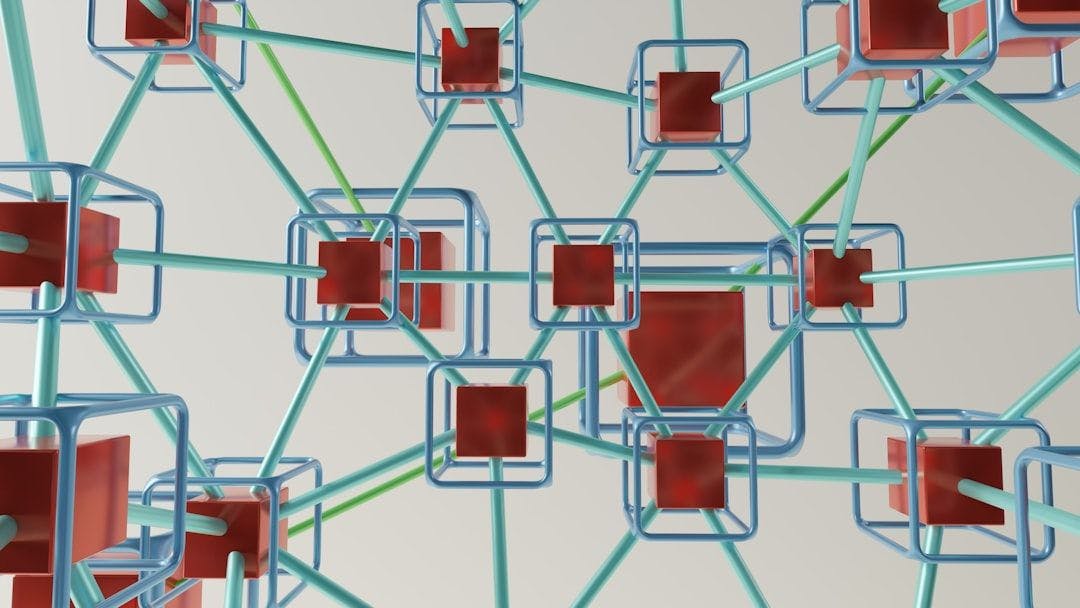Smart Contract Templates: Foundations, Design and Research - Summary, Further Work & References

Too Long; Didn't Read
This paper has considered four foundational topics regarding smart contracts: terminology, automation, enforceability, and semantics. We defined a smart contract as an automatable and enforceable agreement. By selecting the appropriate smart contract code, this approach results in the creation of Ricardian Contract triples. We then explored the design landscape: increasing the sophistication of parameters to complex higher-order types.Listen to this story
Ricardian principles illuminate the market's logic, guiding informed decisions and enlightened policy.
EXPERTISE AND PLACE ON THE INTERNET.
STORY’S CREDIBILITY
Academic Research Paper
Part of HackerNoon's growing list of open-source research papers, promoting free access to academic material.
Authors:
(1) Christopher D. Clack, Centre for Blockchain Technologies, Department of Computer Science, University College London;
(2) Vikram A. Bakshi, Investment Bank CTO Office, Barclays;
(3) Lee Braine, Investment Bank CTO Office, Barclays.
Table of Links
2 Foundations and 2.1 Terminology — “smart contracts”
2.4 The semantics of contracts
3.2 The design landscape for Smart Contract Templates
4 Summary and Further Work and References
4 Summary and Further Work
4.1 Summary
This paper has considered four foundational topics regarding smart contracts: terminology, automation, enforceability, and semantics. We defined a smart contract as an automatable and enforceable agreement. We viewed legal contracts within a simple semantic framework based on two key aspects: one being the operational aspects concerning automation of the contract and another being the non-operational aspects. We then described templates for legally-enforceable smart contracts as electronic representations of legal documents containing prose and parameters (with each parameter comprising an identifier, a type and an optional value). Agreements are then fully-instantiated templates, including customised legal prose and parameters. By selecting the appropriate smart contract code, this approach results in the creation of Ricardian Contract triples.
We then explored the design landscape: increasing the sophistication of parameters to complex higher-order types and business logic that could be admissible in court and potentially replace the corresponding legal prose. We also explored increasing the use of common standardised code through greater sharing, evolving from different codebases across banks to broader adoption of common utility functions to common business logic. Additionally, longterm research was outlined which could lead to source languages which can be automatically translated into both code and legal prose; even longer term research could result in formal languages which themselves are admissible in court.
4.2 Further Work
A benefit of looking to the future is that it helps to identify a potential roadmap for applying research within industry. Smart Contract Templates have already demonstrated a way to link standardised agreements to standardised code and so, in the near term, it may be possible to utilise them with existing infrastructure. In the longer term, they could be utilised on shared ledgers.
We are continuing to collaborate broadly, including via trade associations such as ISDA and FIA, on exploring formats for the storage and transmission of smart legal agreements comprising legal prose and parameters. Of particular interest are the corresponding essential requirements and design options, including the possibility of extending the scope of existing data standards such as FpML (Financial products Markup Language) for derivatives.
There are many open questions for the future. We have explored some of these questions in this paper, but we will end with one more: is it possible to provide straight-through-processing of financial contracts, with full confidence in the fidelity of the automated computer code to the entire semantics of the contract? This, of course, will require substantial work and collaboration by the financial services industry, standards bodies, academia[8], and lawyers.
References
[1] Axoni. AxCore, 2016. https://axoni.com/.
[2] L. Braine. Barclays’ Smart Contract Templates, 2016. Barclays London Accelerator, https://vimeo.com/168844103/ and http://www.ibtimes.co.uk/barclays-smart-contracttemplates-heralds-first-ever-public-demo-r3s-corda-platform-1555329/.
[3] R.G. Brown, J. Carlyle, I. Grigg, and M. Hearn. Corda: An introduction, 2016. At https://static1.squarespace.com/static/55f73743e4b051cfcc0b02cf/t/ 57bda2fdebbd1acc9c0309b2/1472045822585/corda-introductory-whitepaper-final.pdf. Also see https://www.corda.net/.
[4] CommonAccord, 2016. http://www.commonaccord.org/.
[5] Digital Asset. The Digital Asset Platform - Non-technical White Paper, 2016. Available at https://digitalasset.com/press/digital-asset-releases-non-technical-white-paper.html.
[6] Ethereum, 2016. https://www.ethereum.org/.
[7] I. Grigg. The ricardian contract. In Proceedings of the First IEEE International Workshop on Electronic Contracting, pages 25–31. IEEE, 2004. http://iang.org/papers/ricardian_ contract.html.
[8] I. Grigg. On the intersection of ricardian and smart contracts, 2015. http://iang.org/ papers/intersection_ricardian_smart.html.
[9] I. Grigg. The sum of all chains — let’s converge!, 2015. Presentation for Coinscrum and Proof of Work. http://financialcryptography.com/mt/archives/001556.html.
[10] T. Hvitved. Contract Formalisation and Modular Implementation of Domain-Specific Languages. PhD thesis, Department of Computer Science, University of Copenhagen, 2012.
[11] Hyperledger Fabric, 2016. https://github.com/hyperledger/fabric/.
[12] Monax Industries. Dual Integration, 2016. https://monax.io/explainers/dual_ integration/.
[13] Legalese, 2016. http://www.legalese.com/.
[14] M. Mainelli and A. Milne. The impact and potential of blockchain on the securities transaction lifecycle, 2016. SWIFT Institute Working Paper No. 2015-007.
[15] R3 and Norton Rose Fulbright. Can smart contracts be legally binding contracts?, 2016. http://www.nortonrosefulbright.com/knowledge/publications/144559/can-smartcontracts-be-legally-binding-contracts/.
[16] J. Stark. Making sense of blockchain smart contracts, 2016. http://www.coindesk.com/ making-sense-smart-contracts/.
[17] T. Swanson. Great chain of numbers: A guide to smart contracts, smart property and trustless asset management, 2014. https://s3-us-west2.amazonaws.com/chainbook/Great+Chain+of+Numbers+A+Guide+to+Smart+Contr acts%2C+Smart+Property+and+Trustless+Asset+Management+-+Tim+Swanson.pdf.
[18] T. Swanson. Consensus-as-a-service: a brief report on the emergence of permissioned, distributed ledger systems, 2015. http://www.ofnumbers.com/wp-content/uploads/2015/ 04/Permissioned-distributed-ledgers.pdf.
[19] N. Szabo. Formalizing and securing relationships on public networks. First mind, 2(9), 1997.
This paper is available on arxiv under CC BY 4.0 DEED license.
[8] For example, further investigation of contract semantics and the specification language CLACK is being pursued at University College London.
. . . comments & more!






